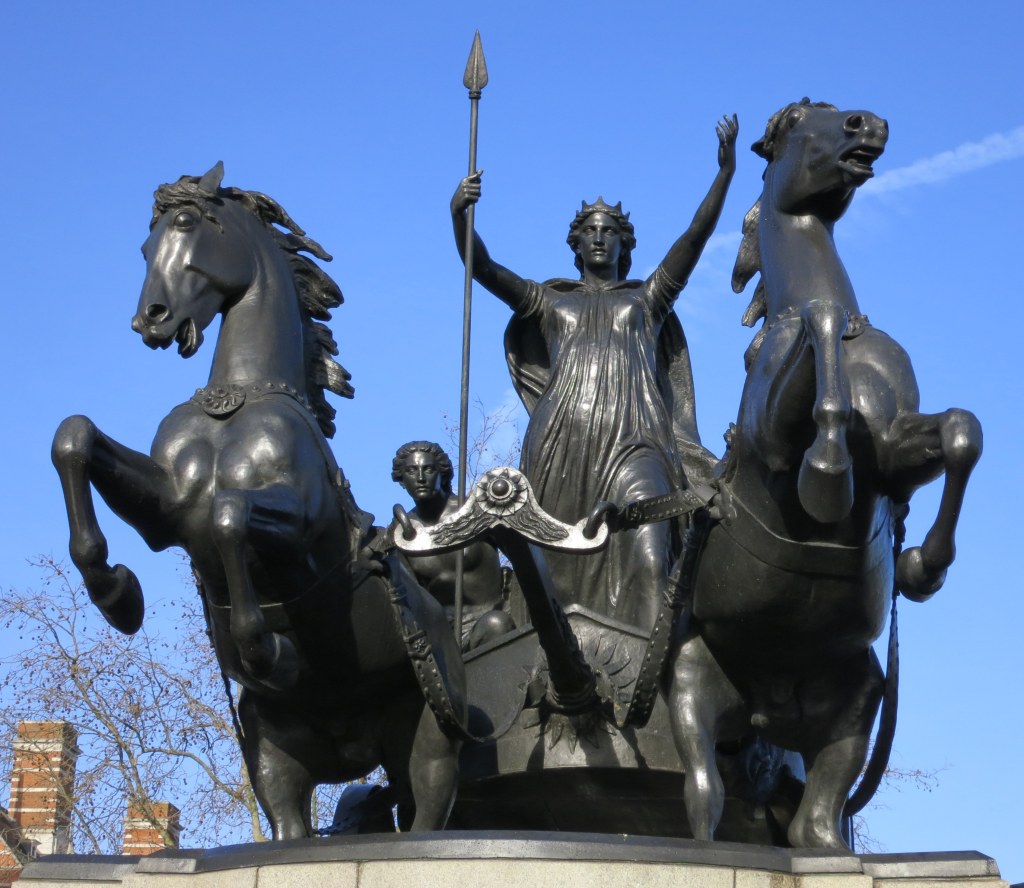We think of Rome as a very masculine society – and nowhere more so than down at the local amphitheatre, when the gladiators were playing a show. Gladiators were the Roman equivalent of the rock stars now the focus of public adulation.
However, just as in rock music, the masculine world of the gladiator was challenged by an unexpected interloper – women.
There has been much speculation as to whether women fought as gladiators in Ancient Roman – as well as how good they were. The physical prowess needed to be a gladiator is well documented – but just as women decided to take up bass guitar and enter the arena, there is evidence that women also took up arms and fought as gladiators.
This is perhaps not as astonishing as it might seem – the warrior queen was not unknown in ancient times, one of the most infamous being that fierce opponent of Rome, Boudicca, Queen of the Iceni. So if women could ride into battle in a chariot, brandishing a sword and wearing heavy armour, why should they not be able to fight in combat down at the local amphitheatre?

One indicator that women fought as gladiators is suggested in a bas-relief currently in the British Museum in London. The marble tableau was discovered in Halicarnassus and dates from around 1-2 AD.
The bas-relief shows two gladiators and bears the name Amazon and Achillia – as women they would have fought in the gladiator category known as the provocatrices. Women fought with heavy armour, just as male gladiators did. However, it is likely that they also fought bare-breasted.
Women censored
There may only be rare examples of ancient artworks depicting female gladiators simply because of the prejudice against female nudity down the centuries – and especially regarding women who fought. Throughout the ages, art was destroyed or desecrated and often as a result of religious censorship – women fighting and being bare-breasted was controversial, if not unacceptable, to many faiths. It is thought that Pope Gregory I was especially responsible for the destruction of art that depicted women fighting or being in a state of undress – but other periods in history also saw male statuary robbed of their penises, or having their genitals covered by fig leaves, or statues being decapitated or disfigured in other ways. Destroying art involving combatant women seems to have been a special mission of Pope Gregory, however.

Ghost, British Library, London
Women as performers
It is likely that women gladiators appeared on the list of entertainments for wealthy or influential Romans – these entertainments were known as “munera”, meaning “duties” or “obligations”. The novelty of female gladiators probably appealed to wealthy or important citizens who, just like today, expected to be entertained by only the best or rarest.
There is little documenting how these women were selected, trained or treated – what their living conditions were like, or even if they were allowed to marry and have families. Their very existence shows, however, that women have not just been passive observers or marriage tokens throughout history, not even during the toxic masculinity of the Roman Empire.
They have been fighters, too.

